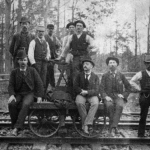Giddy Tunkhannock Girls
~The Scranton Republican, Monday Morning, October 19, 1891, p5.
THEY ATTEMPT TO FLEE WITH A DRAMATIC COMPANY.
NOVEL PURSUIT ON A HAND CAR.
An Anxious Father’s Ruse to Prevent the Downfall of His Daughter—Found Along the Railroad Track Near Kingsley’s—One of the Girls in Scranton.
The “Inside Track” Company showed in Montrose on Thursday night and among the audience were two Tunkhannock girls, Effie Rosengrant,1 aged 18, daughter of Proprietor Rosengrant2 of the Warren-street House, and Annie Fox, a few years the senior of Miss Rosengrant. The girls had spent the day in Montrose, and during the afternoon became acquainted with the members of the dramatic troupe.
INDUCED TO FLEE FROM HOME.
As the girls evidenced unmistakable symptoms of being stage-struck, it did not require a great amount of cajoling to induce them to join the troupe. They wanted to go along with the company that night, but the manager would not consent, fearing, possibly that he might be accused of enticing the girls from home. However it was agreed that the would-be Terrys3 or Coghlans4 should follow the company to Lancaster and there join the troupe.
The girls did not reach home on Thursday night, and on Friday afternoon started for Lancaster. They reached Alford5 by way of the Lackawanna & Montrose Railway, and as they had some time to wait before a southbound train would be due, they decided to walk to Kingsley’s,6 a few miles farther down, and board the train there where no one would recognize them, so the direction they would take would be a mystery.
By this time the girls’ relatives in Tunkhannock were thoroughly alarmed over their long absence from home. Miss Rosengrant’s father determined to go in search of the girls, and upon reaching Montrose was pained to hear a rumor that his daughter and Miss Fox had skipped out with a show company which was billed for Lancaster. Without the loss of a moment Mr. Rosengrant hired a team and drove with haste to Alford. From the young man in charge of the station there he learned that two girls answering the description given had started down the track in the direction of Kingsley’s only a short time before. The station agent judged that they could not have covered more than half the distance by that time, and advised the impatient father to drive to Kingsley’s and head them off.
A HAND CAR IS SECURED.
A better plan struck Mr. Rosengrant. A gang of section men were at work about 100 yards up the road and among their paraphernalia was a hand car7 of the improved style, with patent propellers and capable of making excellent time on a fair grade. The anxious father struck a bargain with the section boss and before any time elapsed Mr. Rosengrant was aboard the hand car spinning in the direction taken by the runaway girls, the motive power being supplied by two stalwart “navies”8 who were encouraged to show the best speed of their machine by liberal quantities of substantial encouragement from their solitary passenger.
On, on sped the light four-wheeled care with the irate parent on board. It seemed as if the minutes flew by faster than the telegraph poles and yet a high rate of speed was being maintained. The human propellers worked until their backs ached. Meanwhile their passenger grew more impatient.
“Five dollars each if you overtake them before they reach Kingsley’s,” he said.
The men redoubled their efforts. The telegraph poles looked like the palings in a picket fence. Still the father was impatient.
“Faster, men, faster,” he shouted above the creaking of the rusty cogs. “You go like snails.”
But the men could work no harder. Their backs moved up and down like the strokes of a driving rod on a locomotive. As the father shouted out his last muttered complaint one of the men sprang back from the crank in exhaustion.
“I can do no more,” he gasped. A deep potation from a flask which Mr. Rosengrant handed him renewed his courage, and he again resumed his task. Over three fourths of the distance had now been passed. They were within a half mile of Kingsley’s. As the car rounded a curve with a bound which sent the lonely passenger to one side, down the tracks about 300 yards ahead of them they saw the two wayward girls leisurely picking their way over the irregular ties.
“There they are,” cried Mr. Rosengrant excitedly, lurching to the forward part of the card.
THE GIRLS ALONG THE TRACK.
The noise of the approaching truck caused the girls to look around and they stepped to one side of the track to allow the car to pass. It was now nearly up to them and the brake was applied. When the car overtook the girls, who were as yet unaware of the near proximity of their pursuer, Mr. Rosengrant sprang off and confronted them.
The scene that ensued is held sacred, suffice it to say that the girls wept, the father’s anger cooled down and all returned to Alford on the little red car, which was the timely means of saving the girls an experience which might have been the cause of their downfall.
Miss Fox, upon reaching Montrose, refused to go farther, saying she dreaded to go home. She bought a ticket for Scranton and is believed to be with friends in this city.
NOTES
1 Evelyn “Eva” H. ROSENGRANT (1874-1948), actress, housewife, m1 Herman LEONARD (1888); m2 comic actor George H. HAMILTON (1892); m3 Carson COOPER
2 William Henry “W.H.” ROSENGRANT (1839-1921), barber, merchant, member of the Tunkhannock police force, proprietor of the Warren Street Hotel; m. Martha TITUS
3 Dame Alice Ellen TERRY (1847-1928), a popular English actress
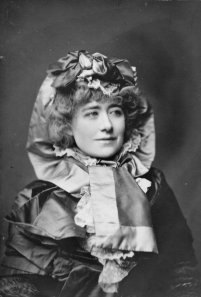
4 Charles Francis COGHLAN (1842-1899), an Irish actor and playwright in Europe and America
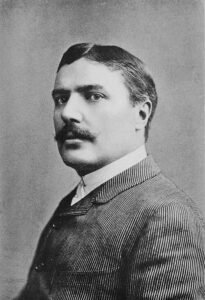
5 Alford, Harford Township, Susquehanna County, PA is 3.7 miles from Kingsley. Photo from Pennsylvania Railroad Stations, Past and Present (Dan West)
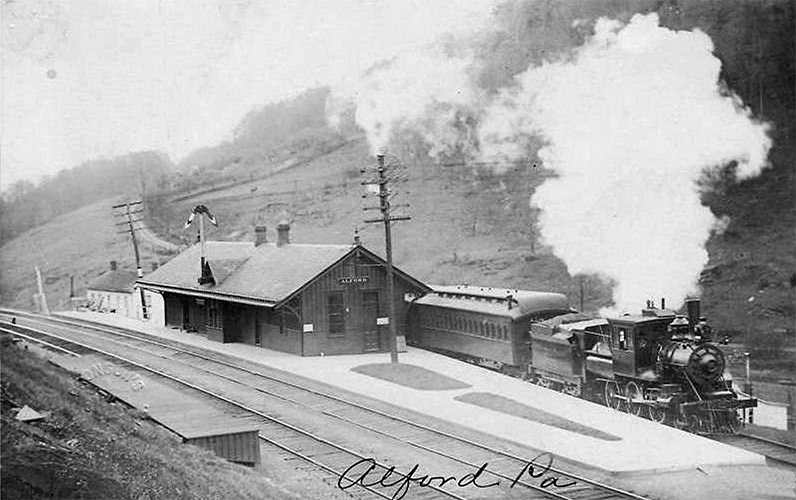
6 Kingsley, Harford Township, Susquehanna County, PA (Photo postcard)
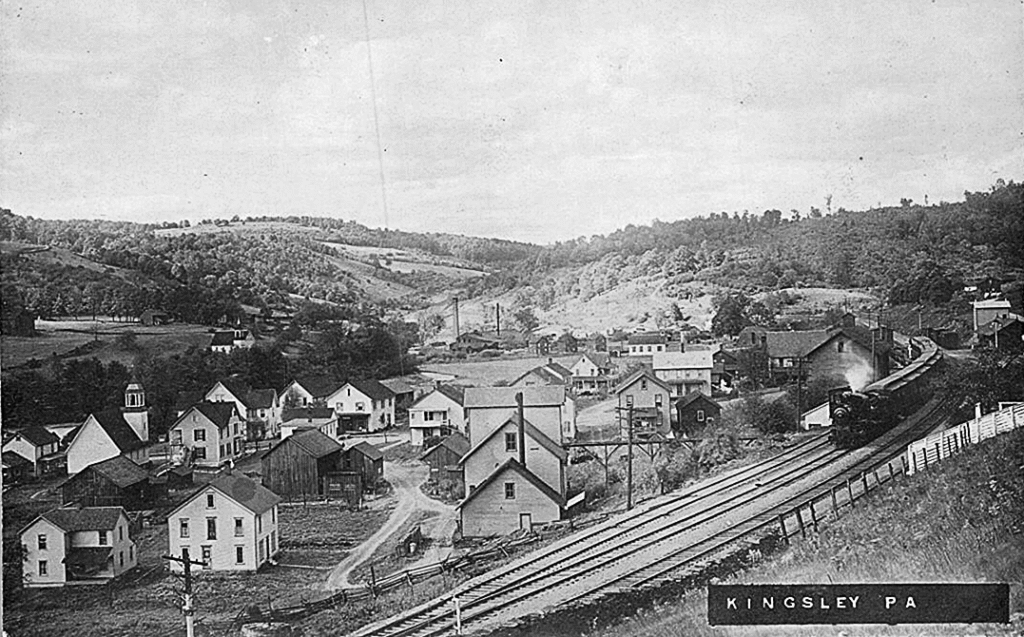
7 An example of a railroad handcar of this era: Hand car photo, 1891, Baltimore & Ohio Railroad Company; Library Company of Philadelphia Print Dept. album – B&O [P.9945.129]

8 Navvy: a manual laborer, usually on a civil engineering project (roads, tunnels, canals, railroads). Photo: Nordic Museum, Public domain, via Wikimedia Commons


